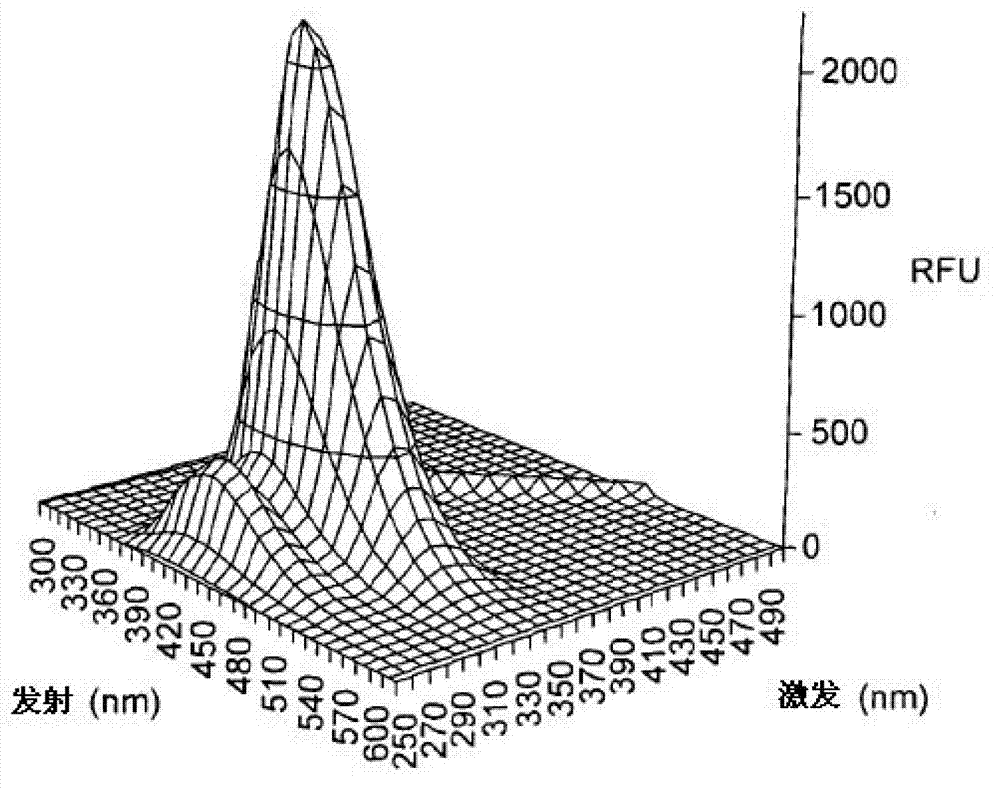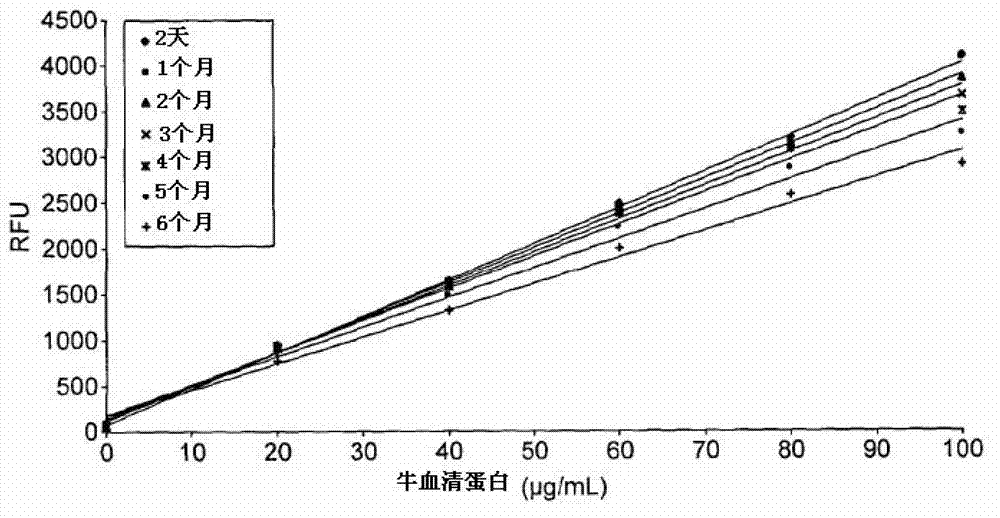In-situ reagent for detection of proteins
A technology of protein and kit, applied in the field of stable protein and/or amino acid detection composition
- Summary
- Abstract
- Description
- Claims
- Application Information
AI Technical Summary
Problems solved by technology
Method used
Image
Examples
Embodiment 1
[0148] Embodiment 1: Preparation of o-phthalaldehyde / acetylcysteine reagent
[0149] Dissolve 9.5 g of anhydrous disodium tetraborate in 500 ml of deionized water, add a few drops of 1M NaOH to adjust the pH, and prepare a sodium borate buffer solution with a pH of 9.23. Add 60 mg of N-acetylcysteine into the buffer solution and stir until completely dissolved with a magnetic stirring bar. 60 mg of o-phthalaldehyde was dissolved in 5 ml of methanol, and all of it was added to the above-mentioned sodium borate buffer solution to prepare an acetylcysteine solution. The o-phthalaldehyde / acetylcysteine solution was prepared fresh weekly and refrigerated at 4°C in the dark for 24 hours before use to reduce background fluorescence interference.
Embodiment 2
[0150] Example 2: Preparation of stable o-phthalaldehyde / acetylcysteine for protein detection
[0151] Dissolve 19 g of anhydrous disodium tetraborate in 900 ml of deionized water, add a few drops of 1M NaOH to adjust the pH, and prepare a sodium borate buffer solution with a pH of 9.23. Add 1 ml of TritonX-100, 1.63 g of N-acetylcysteine, and 0.077 g of dithiothreitol into the buffer solution, and stir with a magnetic stirring bar until completely dissolved. 0.268 g of acetylcysteine was dissolved in 10 ml of methanol, and all of it was added to the above-mentioned sodium borate buffer solution to prepare an OPA solution. The solution was made up to 1 L. The o-phthalaldehyde / acetylcysteine solution was refrigerated at 4°C in the dark for 24 hours before use to reduce background fluorescence interference.
Embodiment 3
[0152] Example 3: Preparation of stable o-phthalaldehyde / acetylcysteine, further comprising sodium edetate
[0153] After the same o-phthalaldehyde solution in Example 2 was prepared, 0.32 g of disodium edetate was added and stirred with a magnetic stirring bar until it was completely dissolved.
PUM
 Login to View More
Login to View More Abstract
Description
Claims
Application Information
 Login to View More
Login to View More - R&D
- Intellectual Property
- Life Sciences
- Materials
- Tech Scout
- Unparalleled Data Quality
- Higher Quality Content
- 60% Fewer Hallucinations
Browse by: Latest US Patents, China's latest patents, Technical Efficacy Thesaurus, Application Domain, Technology Topic, Popular Technical Reports.
© 2025 PatSnap. All rights reserved.Legal|Privacy policy|Modern Slavery Act Transparency Statement|Sitemap|About US| Contact US: help@patsnap.com



